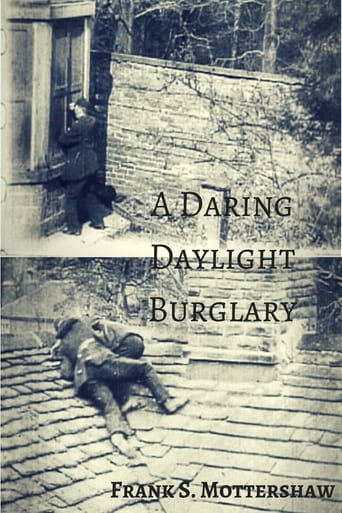IslandGuru
Who payed the critics
Matylda Swan
It is a whirlwind of delight --- attractive actors, stunning couture, spectacular sets and outrageous parties.
JoeytheBrit
This early British film from the Sheffield Photographic company was one of two films that heavily influenced Edwin S. Porter when making The Great Train Robbery - a film which is erroneously credited with creating the narrative film. This film - at five minutes, quite long for its day - depicts, well, a daring daylight robbery, which is witnessed by a conscientious young boy who races to a nearby police station to raise the alarm. The film then follows the police's pursuit of the burglar over rooftops, down hillsides and across rivers, and it all makes for quite an exciting spectacle. I have to say the British were leading the way in the early years of the 20th century when it came to film production. While Edison and Vitagraph were shooting street scenes ad-nauseum, the Brits were coming up with action-packed blockbusters like this.
bob the moo
I watched this film on a DVD that was rammed with short films from the period. I didn't watch all of them as the main problem with these type of things that their value is more in their historical novelty value rather than entertainment. So to watch them you do need to be put in the correct context so that you can keep this in mind and not watch it with modern eyes. With the Primitives & Pioneers DVD collection though you get nothing to help you out, literally the films are played one after the other (the main menu option is "play all") for several hours. With this it is hard to understand their relevance and as an educational tool it falls down as it leaves the viewer to fend for themselves, which I'm sure is fine for some viewers but certainly not the majority. What it means is that the DVD saves you searching the web for the films individually by putting them all in one place – but that's about it.Worth remembering the role that Britain had in the development of silent cinema and this impressive film is one way to remember it. This is a chase film about a botched robbery (100 years later and we're still making 'em!) that goes across rooftops, streets and train stations. It is quite thrilling even now to watch and I imagine back in the day it must have been quite something to have seen this action movie that runs to five minutes. Technically it is impressive and the selection, framing and editing of shots makes the film flow really well.It won't amaze modern viewers but to help put it in perspective think about how the Bourne films have gripped and thrilled audiences with their movement and action – now imagine the impact this must have had on viewers back when it came out. Impressive.
Snow Leopard
This is an interesting early crime/chase drama, and it seems to have been quite carefully made for its time. You can see why the story of the "Daring Daylight Burglary" was one of the better-known pictures of its era. The settings are realistic, and there is a lot of action, with quite a few developments taking place in just a short time. Apparently, it originally had a narration designed to accompany it and explain the action - since the use of title cards was not yet the norm - but even without the narration, it is usually clear enough what is happening, since most of the scenes are pretty well-conceived. The occasional small gaps seem to be physical defects in the film due to its age, rather than flaws in the original. It's a pretty efficient feature, with good story-telling for its era.
Alice Liddel
This is probably my favourite of the early cinema classics, an exciting action narrative that inspired Edwin S. Porter in making his masterpiece, 'The Great Train Robbery'. The title says everything you need to know about the plot - a man tries to burgle a country house in the middle of the day; the police are roused and chase is given. this is brilliantly done in terms of editing, with some excellent chases and fistfights.
But what makes 'Burglary' special is the manner of its filming, which manages to give its genre mechanics a Surrealist quality that would later flourish with Feuillade's 'Fantomas'. The robbery takes place in a real, rather than a stylised environment. Many crime films try, of course, to be gritty and realistic, set in genuine locales, but end up seeming less so because genre and its rules are not like life. This film doesn't try to adapt its genre to its setting, creating an eerie clash.
What's more, although the setting is real, it's not common, but a run-down country-house, overgrown with brambles, dead branches and the like, contributing to the rarefied atmosphere. Add to this the purity of the plot, shorn of bogus 'psychologising' and extraneous plotting, just criminal and police, and you already see the bones of what would become Feuillade's unheimliche cinema.This would be more than enough, but than something really extraordinary happens. In the middle of the chase, a policeman is knocked over as he climbs over a large wall in a deserted country lane. Obviously, there are a couple of frames missing, because magically carriages appear, out of nowhere, like something out of Sjostrom's 'Phantom Carriage'. What's more, most of the traffic ignore the stricken lawman! So, here is a film where generic grounding and certainties are pushed towards surrealism, fantasy, absurdity, eight years before 'Fantomas' the novel was ever written. A masterpiece.

